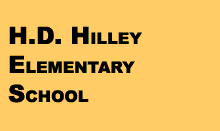 "We all know what everyone else is doing." When principal Ivonne Durant first arrived at H.D. Hilley Elementary School, she and the staff decided to upset some stereotypes about who can learn. The state test scores said Hilley students couldn't. But instead of making excuses for their students, whose homes are among the cotton fields of rural Texas and whose demographics as poor and Latino often add up to school failure, the school got focused. Several teachers left. And now everyone knows what the goals are and what is expected – for staff and students. After only two years, Hilley was chosen by the Texas Education Agency as a "Texas Successful School," in recognition of the impressive progress students were making. "We are motivated by each other," says a teacher who appreciates the transition the school has been able to make. "Before, I was doing my own writing program, my own reading program. Now I am doing what the whole school is doing. It is easier for the teachers. We all know what everyone else is doing. Now we are more directed." This direction comes from many levels. An evaluator meets with the staff at the beginning of the year to help them analyze their students' needs and decide how to meet them. Teachers and administrators are aware throughout the year of how well they are meeting their goals. "We all give ourselves pressure," says one teacher. "We tell each other what we expect." At the end of the year, everyone sits down again to analyze what the state test scores tell them about where they can improve. In addition to the leadership of the School Improvement Team of parents, community members, teachers, and administrators, Hilley's vertical teams, which include teacher representatives from each grade level, coordinate learning in key content areas. Teams for communications, mathematics and science, fine arts, and technology (which has now been integrated into the other three areas) meet with the principal for a half day every other month, making recommendations for whole-school professional development. "I like the way we break into the vertical teams," says one teacher. "We become specialists in that area. It makes you want to stay abreast, keep up." The vertical teams also cross-fertilize the horizontal, grade-level teams, which meet for an hour each week. As a first-grade teacher reports, "In our grade levels we get together every single week and strategize what is working and not working." Minutes from their meetings keep the principal informed of particular issues that come up, and she is a frequent observer in classrooms, noting how teachers use what they are learning. The assistant principal and literacy mentor are additional resources to teachers, observing, providing demonstration lessons, debriefing with them, and participating in the informal learning that is pervasive in the building. As the mentor points out, "We do a lot of sharing. We make the time, even if it is just a short moment walking down the hall, even in the bathrooms. We e-mail each other. If you find an article that is related to what someone else is doing, you put it in their box. I have books in my room that are borrowed from everyone. We are constantly aware of what everyone is doing." Technology has been a major push at Hilley, with the school's participation in the district Technology Innovation Challenge Grant from the U.S. Department of Education providing computers and training for the school. Teachers really do e-mail each other. And students, from first grade on up, use computers for anything from word processing to HyperStudio presentations. Parents have also been encouraged to learn and teach each other how to use the new technology. Computers are always available to them in the school's Parent Center. Finally, collaboration and alliances with partner organizations are a feature of Hilley staff's continuous learning. Through partnerships arranged by the Socorro School District, teachers at Hilley can study for tuition-free Master's degrees, enroll in a two-year technology specialty, take advantage of mentors funded by the National Science Foundation, and benefit from the revamped teacher education program at the University of Texas at El Paso. University student teachers and education school faculty are a regular source of new ideas for the school. As principal Durant reports, "The role of the university is huge, huge. Both for degrees and for our training. They are a key ingredient of our professional development." All of this has translated into improved academic achievement for the Hilley students, students that Durant and her staff members proudly refer to as mijos and mijas |
Grades K-5 Number of Students 690 Student Ethnicity 89% Latino 11% White 1% African American English Language Learners 24% Free/Reduced Lunch 70% Special Needs 9% Measures of Success 1997 Texas Successful School increased state assessment scores
693 N. Rio Vista Road El Paso, TX 79927 915-860-3770
|
WestEd
WestEd Home | Search | Feedback
About WestEd | Our Work | Resources | What's New
This information can be found at
http://
Last modified
©
WestEd® | (415) 565-3000 | www.WestEd.org